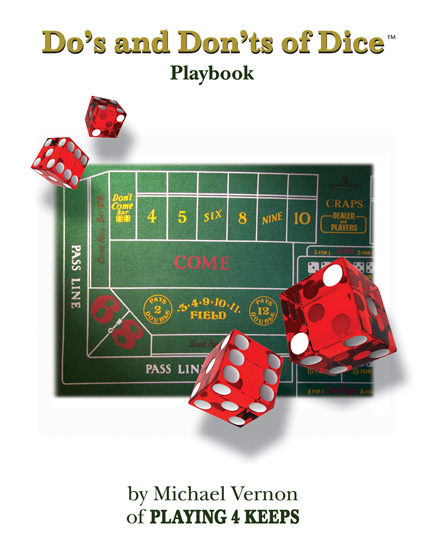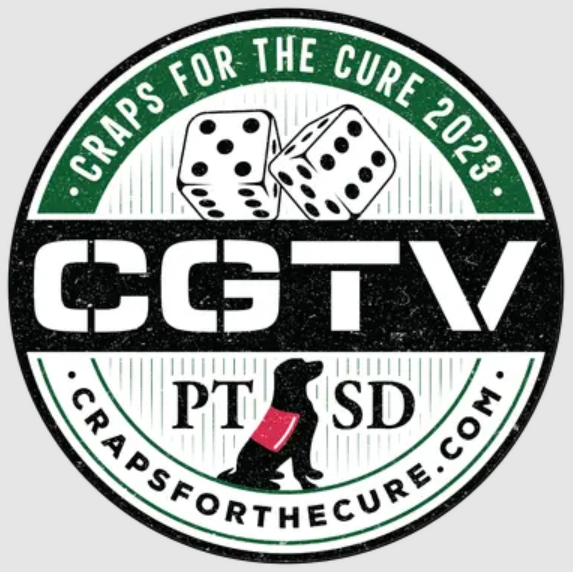|
Sevens Dominant Precision Shooter Plays
BY: Steve
Quick, without thinking - what is the best bet on the layout during the come out roll? The Pass Line bet, right? There are eight ways to win on the seven or eleven versus four ways to lose on the craps numbers. If any other number shows it is essentially a push for that roll and the number becomes the shooter's point.
Now let's go one roll out and take a second look. Your Pass Line bet is established and it is time for the shooter to try to make his point. What is the worst bet on the layout now? Easy. Again the answer is the Pass Line bet. Why? Because now you are stuck with a contract bet that is going to lose two out of three times.
Without a doubt, the seven is the most powerful number in the game of craps. The seven giveth and the seven taketh away. But does it really have to be that way? Is there any way to make the seven work for you all the time? For the savvy precision shooter there just may be. Let's look at three ways the shooter can take advantage of the seven by playing Right Way, Wrong Way, or a hybrid strategy that incorporates elements of both.
Precision dice shooters - or Advantage Shooters as I prefer to call them - don't actually control the dice. Instead, they influence them. By carefully pre-setting the dice to specific arrangements and making a controlled toss these shooters can often alter the short-run probabilities of the game. The average shooter will toss a seven one time in six. That's because out of thirty-six possible combinations of the dice there are six that add up to seven: 1-6, 6-1, 2-5, 5-2, 3-4, and 4-3. But an Advantage Shooter who can keep the dice on axis may, when utilizing specific sevens-dominant pre-set arrangements, expect to average as many as eight sevens in thirty-six rolls. Expert Advantage Shooters who can keep both dice on axis and spinning at the same speed may perform even better.
There are 1,152 possible permutations of dice setting but there all of them are variations of six axial pre-sets. Of those six, three are sevens-dominant axles. They are the 5-2 / 5-2, the 3-4 / 3-4, and the 6-1 / 6-1. Here are the three primary axial pre-sets arranged so that the seven is showing all sides:
All Sevens All Sevens All Sevens
5-2 / 5-2 on Axis 3-4 / 3-4 on Axis 6-1 / 6-1 on Axis
These sets all have one thing in common. When rolled on axis each set contains four combinations of numbers that add up to seven. The seven appears twenty-five percent of the time on these combinations of the dice as opposed to about seventeen percent of the time on the random shooter. For the Right Way player that can mean more come-out naturals, and that's a beautiful thing. But what about the Don't player? When used properly dice setting and advantage shooting can work for them as well.
Let's take a look at the three sevens-dominant dice pre-sets and see what opportunities they reveal.
All Sevens - 5-2 / 5-2 Axis Point Distribution: With this pre-set the five pips and the two pips are showing on the axial or lateral faces of the dice. In layman's language it's "five-two sevens on the side."
Point: 2 3 4 5 6 7 8 9 10 11 12
Appears: 1 0 2 2 1 4 1 2 2 0 1
There are four ways to roll the seven on this axis, but only one way each to roll the six and eight. For the Right Way player this is not a very attractive set. Yes, there are four "naturals" on axis, but there are two craps numbers as well. Over thirty-six rolls using this come out the shooter could only expect two naturals. Of the numbers that will roll on axis, there is only one way to toss the six or eight - points the Right Way players favor.
For the Don't player, though, minimizing the chances of rolling the six or eight is very important. In fact, this distribution of numbers suggests a powerful way the Don't player can hedge his Don't Pass wager while using this pre-set. Do you see it?
A simple hedge strategy might be to lay $25 no six or no eight in combination with a $15 Don't Pass wager. Since the eleven is not a factor on this axis there is no need to hedge against it. Conversely, we should not see the ace-deuce craps roll either. What are the other possible outcomes? If the shooter tosses the seven on the come out roll he will win $20 on the hedge bet less the $15 losing Don't Pass bet, a net win of $5. If the two rolls he wins $15 on the Don't Pass, and there is no effect on the Lay bet. The twelve is a push. Any point number rolled becomes the player's primary Don't wager and the Lay bet is removed. Provided that the shooter can keep the dice on axis, the only significant exposure is a one in thirty-six possibility that the hard six or eight will roll, and that can be handled with a $1 hop bet on the come out.
Is there another time when this pre-set would work for the precision shooter playing the Dont's? Absolutely. Anytime a precision shooter finds himself with a Dont bet established on the six or eight he should switch to this pre-set and attempt to seven out.
Now let's consider the All Sevens pre-set with the 3-4 / 3-4 on Axis.
All Sevens - 3-4 / 3-4 Axis Point Distribution. In layman's terms the 3-4 seven is "on the sides."
Point: 2 3 4 5 6 7 8 9 10 11 12
Appears: 1 2 1 0 2 4 2 0 1 2 1
Again, there are four ways to roll the seven on this axis. But with the dice set on the 3-4 / 3-4 axis you pick up an additional way to make the six and eight. The ace-deuce and the eleven become more of a factor than in the previous pre-set as well. But the most noticeable change is in the appearance of the five and nine. There are no fives or nines on this axis, and that makes this pre-set a dream for players who like to Lay against the numbers. The play would be much the same as the one discussed earlier, only this time the player would lay $31 no five or no nine to hedge his Don't Pass wager. The advantage player shooting from the Don'ts should consider switching to this pre-set any time the established point is the five or nine and attempt to seven out.
Last of all is the All Sevens Pre-Set with the 6-1 / 6-1 on Axis.
All Sevens - 6-1 / 6-1 Axis Point Distribution. In laymans terms, the 6-1 seven is "on the sides."
Point: 2 3 4 5 6 7 8 9 10 11 12
Appears: 0 0 1 2 3 4 3 2 1 0 0
As you can see, this pre-set arrangement also has four combinations that add up to seven. But unlike the previous two All-Sevens sets, there are no craps numbers on this axis. That, coupled with the fact that there are a total of six combinations of the dice that total six or eight on this axis make it a favorite of Right Way advantage shooters.
Is there a way the Don't player can capitalize on the strengths of this pre-set? About the only way would be to Lay $41 no four or no ten and attempt to toss the seven on the come-out. However, since the likelihood is that the point established with this pre-set arrangement will be the six or eight the shooter might want to consider a hybrid play that combines Don’t and Do action for a shot at a double win. By Laying $41 no four and Playing $20 on the Pass Line, then tossing the seven on the Come Out roll the player can lock up a net $39 win.
The seven is the most powerful number in the game of craps. Understanding how and when to use it to your advantage - whether playing the Right Way or the Wrong way.
Click Here to return to the list of prior articles ...
|
 |










